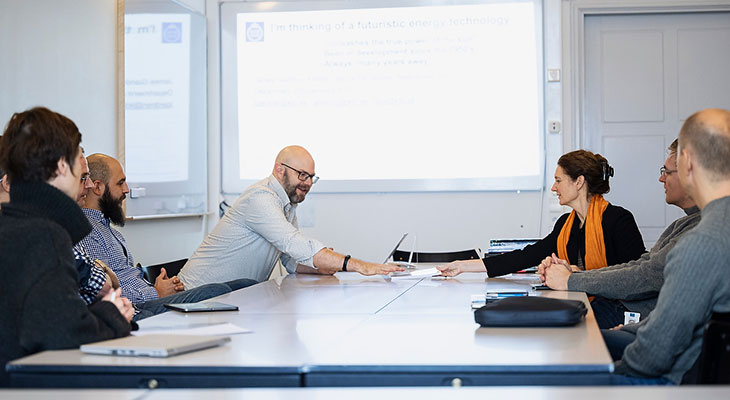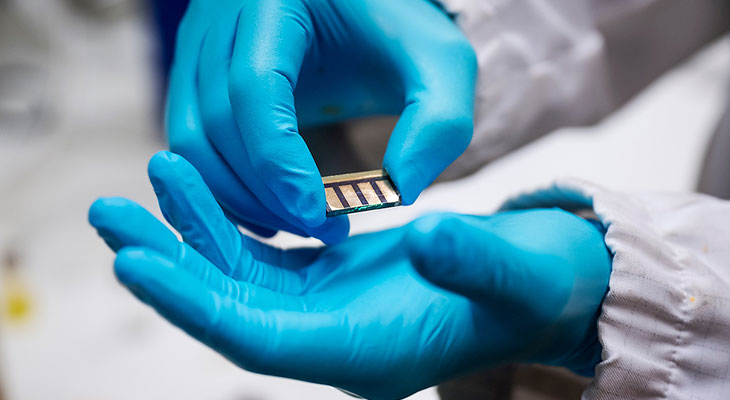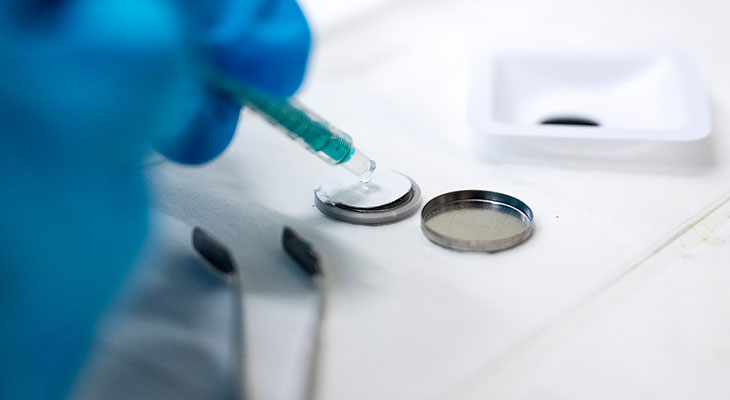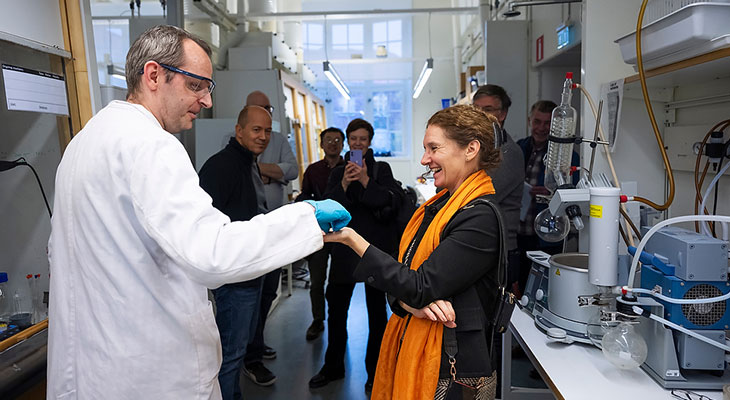Solar cells and non-toxic batteries in the spotlight during KTH Energy Platform’s CBH visit

In October, KTH Energy Platform visited the School of Chemistry, Biotechnology and Health, (CBH), and the Department of Applied Physical Chemistry in particular. During the visit, there were demonstrations of advances in tandem solar cells using perovskite, along with advances in materials for more durable batteries.
Members of KTH Energy Platform were welcomed by James Gardner, Associate Professor of Photoelectrochemistry and Alberto Garcia Fernandez and Alexander Tot, both postdoctoral fellows at the Department of Applied Physical Chemistry at CBH.
“We mainly focus on the development of solar cells of the future in terms of new materials and molecular structures,” says Gardner.
Participants from the Energy Platform included Director Lina Bertling Tjernberg, Deputy Director Christophe Duwig, Research Office Support Pierre Bodin, Wei Liu from the School of Architecture and Community Building, and Joy Roberts, Administrator.

New initiatives for seminars and workshops focusing on solar energy technology within the framework of the KTH Energy Platform were discussed during the visit.
There is currently considerable interest in research to develop so-called tandem solar cells that combine silicon technology and thin film technology. The hope is that combining the two could enable the generation of more efficient and cheaper solar energy.
“Tandem solar cells are difficult to manufacture, but the emergence of the material perovskite about 10 years ago marked a breakthrough. We’re now developing methods to produce thin films of the material that can be placed on top of traditional solar cells. This advance begins with various theoretical calculations which are then tested at low temperatures. The transparent layers are then manufactured to be a few hundred nanometres thin and sprayed in position. A major advantage is that these methods are both cheap and easily scalable for industrial applications,” says Gardner.
“To create sustainable applications, we’re focusing on developing the transparent layers without using rare earth metals,” Gardner adds.
Alberto Garcia Fernandez gave an overview of the process from manufacturing perovskite, to its application to solar cells, as well as testing and analysis of various alternatives.
“We’re focusing in particular on the development of the interfaces between the materials that have been demonstrated to have a significant impact on results,” Garcia Fernandez says.
Toxin-free, chargeable batteries
Alexander Tot then shared details of ongoing research to replace lithium in batteries. Today’s rechargeable lithium batteries, which are found in everything from computers to smart watches, degrade over time and are liable to warp and damage surrounding electronics. The goal of this project is to develop new battery solutions without using toxic or rare earth substances. Instead, batteries should - in simple terms - consist of water, salt and carbon.
“We made a breakthrough when we increased the salinity of the water, which allowed us to improve stability. In our most recent tests, we’ve also succeeded in demonstrating that the batteries can be recharged without significantly affecting their lifespan,” says Tot.
The findings are soon to be published and the evaluation of the technology has been conducted, in part, in collaboration with the RISE research institute. The researchers are also collaborating with colleagues including Kristina Edström, Professor at Uppsala University.
Technologies are now being developed to manufacture the batteries on a larger scale using industrial robots. The goal is also to develop techniques to easily manage and recycle the batteries.
New collaboration ideas
The presentations spurred further conversations on the commercialisation of the technology as well as further collaborations with other research groups in solar energy at KTH. This included an initiative for a platform for collaboration between different research groups active in the development of new solar power technology. At the same time, the conversation sparked ideas for new seminars and workshops within the framework of the KTH Energy Platform.
This was followed by a tour of the lab during which Tot gave a practical demonstration on how button cell batteries are easily manufactured using the new technology. With simple hand movements, he quickly built and charged the batteries.
Garcia Fernandez also showed tandem solar cells that the team had developed from perovskite and showed how the material is developed in the lab.
The next study visit for KTH Energy Platform is planned for the end of December, which will be to the Department of Civil and Architectural Engineering to learn about the development of large-scale energy infrastructure.




Text: Magnus Trogen Pahlén

